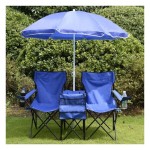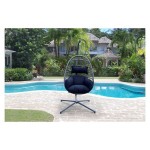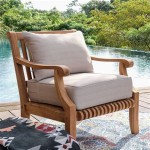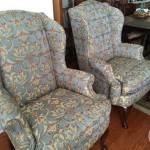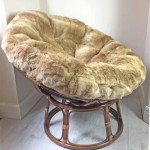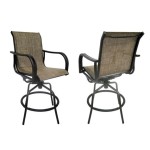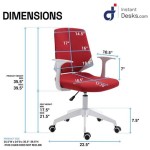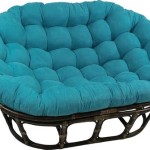Best Fabric For Office Chair: A Detailed Guide
Selecting the most suitable fabric for an office chair is a critical decision that impacts comfort, durability, aesthetics, and overall cost-effectiveness. The ideal fabric should not only withstand daily wear and tear but also contribute to a healthy and productive work environment. This article provides a comprehensive examination of various fabric options, highlighting their advantages, disadvantages, and suitability for different office settings.
The primary function of an office chair fabric is to provide a comfortable and supportive seating surface. However, the fabric's properties extend beyond mere comfort. Factors such as breathability, resistance to stains and abrasion, ease of cleaning, and aesthetic appeal play crucial roles in influencing the long-term satisfaction and performance of the chair. Therefore, a thorough understanding of the characteristics of different fabric types is essential for making an informed decision.
Key Considerations When Choosing Office Chair Fabric
Several factors should be taken into account when selecting the best fabric for an office chair. These considerations encompass both practical and aesthetic aspects, ensuring that the chosen fabric aligns with the specific needs and demands of the workspace.
Durability: The ability of the fabric to withstand daily use and resist wear and tear is paramount. High-traffic office environments require durable fabrics that can endure constant friction, stretching, and potential snagging. Fabrics with high abrasion resistance ratings are generally preferred for such settings. The "Martindale rub test" is a common benchmark used to assess fabric durability, with higher rub counts indicating greater resistance to wear. Consider the typical usage pattern of the chair. A chair used occasionally in a home office will have different demands than one used constantly in a call center.
Breathability: Air circulation is crucial for maintaining comfort, especially during extended periods of sitting. Fabrics that allow air to flow freely help to regulate body temperature and prevent the build-up of moisture, reducing discomfort and promoting a more productive work environment. Breathable fabrics such as mesh, linen, and certain types of synthetic blends are particularly suitable for warmer climates or individuals prone to perspiration.
Cleanability: The ease with which the fabric can be cleaned and maintained is another important consideration. Office chairs are susceptible to spills, stains, and general grime. Fabrics that are easy to spot clean or are stain-resistant can significantly reduce maintenance efforts and prolong the lifespan of the chair. Consider fabrics treated with stain-repellent finishes or those that can be easily wiped down with a damp cloth.
Aesthetics: The fabric's appearance contributes to the overall aesthetic of the office space. The color, texture, and pattern of the fabric can influence the perception of professionalism, comfort, and style. Select a fabric that complements the existing décor and reflects the desired image of the company. Neutral colors and classic patterns are often preferred for professional settings, while bolder colors and contemporary designs can add personality and vibrancy to more creative workspaces.
Cost: The cost of the fabric is a significant factor in the decision-making process. Fabric prices can vary widely depending on the material, construction, and brand. It is essential to balance the desired qualities with budgetary constraints. Consider the long-term value proposition. While cheaper fabrics may offer initial cost savings, they may require more frequent replacement due to wear and tear, ultimately increasing the overall cost.
Common Types of Office Chair Fabrics
A variety of fabrics are commonly used in the manufacture of office chairs, each offering unique characteristics in terms of durability, comfort, and aesthetics. Understanding the properties of these fabrics is essential for making an informed selection.
Polyester: Polyester is a synthetic fabric known for its durability, resistance to wrinkles and shrinking, and ease of cleaning. It is a cost-effective option that is widely used in office chairs. However, polyester can be less breathable than natural fibers and may feel less comfortable in warmer temperatures. Look for recycled polyester options for a more sustainable choice.
Nylon: Nylon is another durable synthetic fabric that is highly resistant to abrasion and tearing. It is often blended with other fibers to enhance its comfort and breathability. Nylon is a good option for high-traffic office environments where durability is a primary concern. It tends to be more expensive than polyester.
Mesh: Mesh is a popular choice for office chair backs due to its excellent breathability. It allows air to circulate freely, keeping the user cool and comfortable. Mesh is typically made of nylon or polyester and can be quite durable. However, mesh may not provide the same level of cushioning and support as upholstered fabrics. The tightness and tension of the mesh also play a role in the overall comfort and support.
Vinyl: Vinyl is a synthetic fabric that is highly durable, water-resistant, and easy to clean. It is a popular choice for chairs in healthcare settings or environments where spills are common. However, vinyl can be less breathable than other fabrics and may feel sticky or uncomfortable in warmer temperatures. Vinyl chairs may also lack a premium aesthetic.
Leather: Leather is a natural material known for its luxurious appearance, durability, and comfort. Leather office chairs can add a touch of elegance and sophistication to any office space. However, leather is more expensive than synthetic fabrics and requires regular maintenance to prevent cracking and drying. There are different grades of leather, with top-grain leather being the most durable and expensive. Bonded leather is a cheaper alternative, but it is less durable and may not have the same feel as genuine leather.
Wool: Wool is a natural fiber that is known for its durability, breathability, and resistance to stains. It is a comfortable and luxurious option for office chairs. However, wool can be more expensive than synthetic fabrics and may require professional cleaning. Wool is also naturally fire-resistant, making it a safe choice for office environments.
Cotton: Cotton is a natural fiber that is soft, comfortable, and breathable. However, cotton is less durable than other fabrics and is prone to wrinkling and staining. Cotton is often blended with other fibers to improve its durability and resistance to wear. Pure cotton might not be the best choice for high-traffic office environments.
Assessing Fabric Performance and Suitability
Evaluating the specific performance characteristics of each fabric is crucial for determining its suitability for different office chair applications. This assessment involves considering factors such as abrasion resistance, breathability, stain resistance, and maintenance requirements.
Abrasion Resistance: As previously mentioned, the Martindale rub test is a standard method for assessing fabric abrasion resistance. A higher rub count indicates greater durability. For high-traffic office environments, fabrics with a rub count of 40,000 or higher are generally recommended. For less demanding environments, a lower rub count may suffice.
Breathability Testing: The breathability of a fabric can be assessed through various methods, including measuring air permeability and moisture vapor transmission rate. Fabrics with higher air permeability and moisture vapor transmission rates are generally more breathable. Consider the climate of the office environment when evaluating breathability. In hot climates, highly breathable fabrics are essential for maintaining comfort.
Stain Resistance: Stain resistance can be evaluated by testing the fabric's ability to repel various types of stains, such as coffee, ink, and grease. Fabrics treated with stain-repellent finishes generally offer better stain resistance. Consider the likelihood of spills and stains in the office environment when evaluating stain resistance. In areas where food and drinks are consumed, stain-resistant fabrics are highly recommended.
Maintenance Requirements: The ease of cleaning and maintenance is an important consideration. Fabrics that can be easily spot cleaned or wiped down with a damp cloth are generally preferred. Some fabrics may require professional cleaning to maintain their appearance and longevity. Consider the available resources for cleaning and maintenance when selecting a fabric.
Fire Resistance: Office chair fabrics should meet specific fire resistance standards to ensure safety. Fabrics that are inherently fire-resistant or treated with flame-retardant chemicals are preferred. Check the fabric's specifications to ensure that it meets the applicable fire safety regulations.
Understanding the various factors and fabric types allows for a more informed decision in choosing the best material for an office chair, optimizing its comfort, durability, and aesthetic appeal.

8 Best Durable Office Chair Fabrics 2024 Flexispot

Choosing The Best Office Chair Material A Comprehensive Guide Official Us Sihoo Store

The 4 Best Office Chairs According To Our Testing Reviews By Wirecutter

Leather Vs Fabric Which Is The Best Material For Chair Keekea

Mesh Vs Leather Fabric Choosing The Right Material For Your Office Chair

Theo Fabric Office Chair Blush

14 Best Office Chairs Of 2025 I Ve Tested Ly 60 To Pick Them Wired

Best Fabric Desk Chair Top

8 Types Of Office Chair Material That Is The Most Suitable For You Steemit

The 6 Best High Back Office Chairs For 2025
